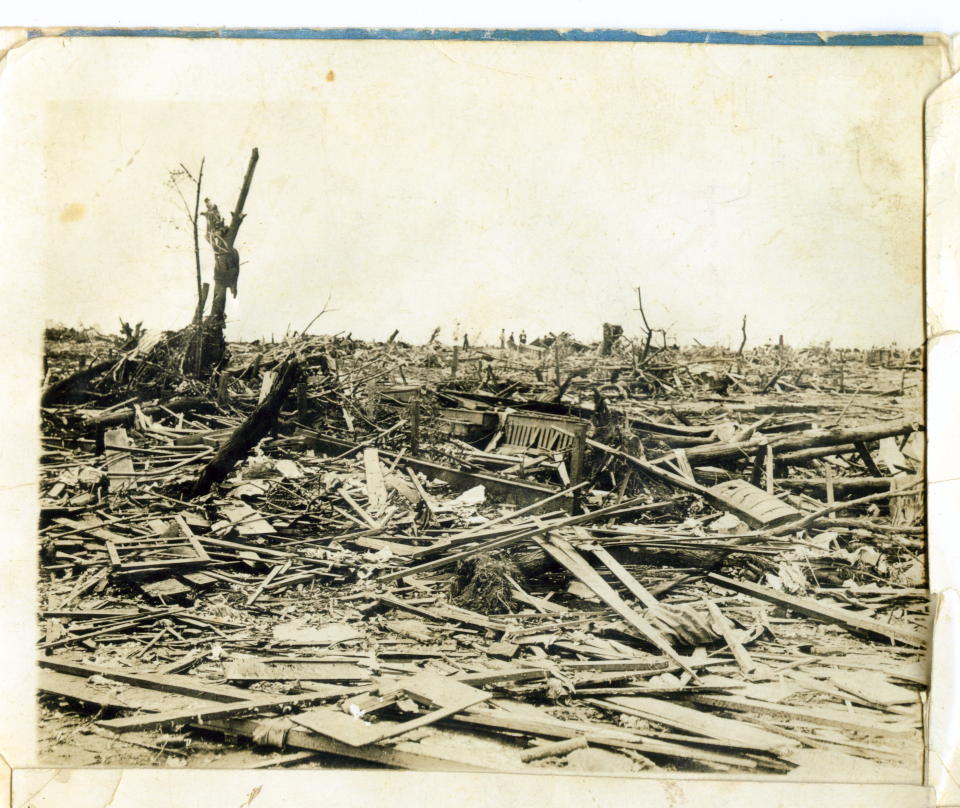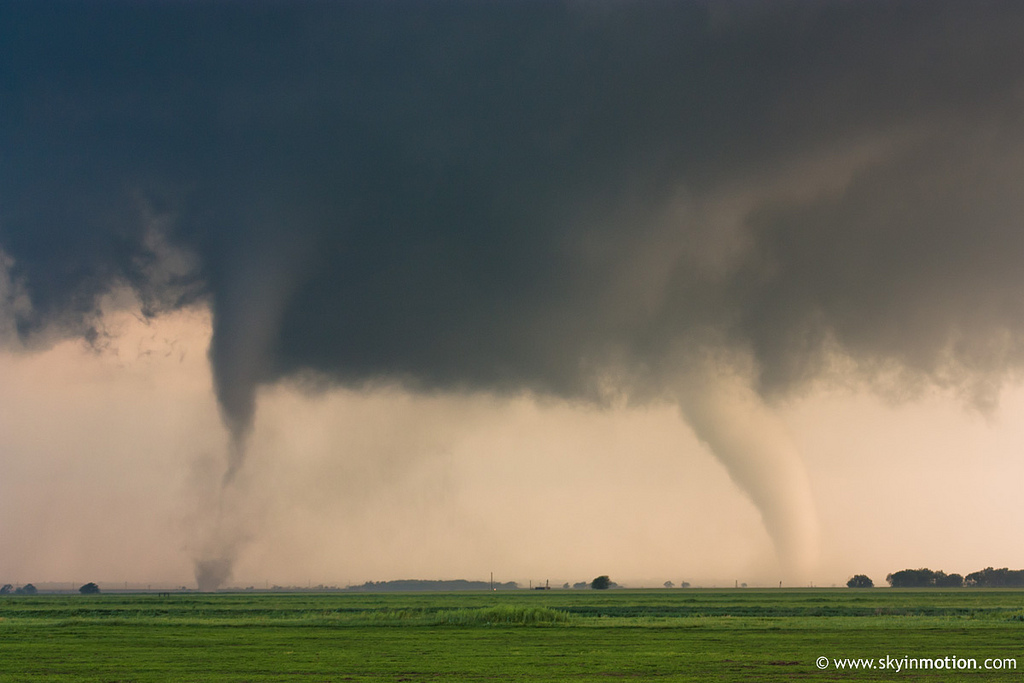
by Ian Livingston and Katie Wheatley
One thing we often try to do in the midst of a big set of tornado days is put it in context to past events. In a world of instant news, size matters.
Tornado outbreaks are messy, vast and daunting to document properly. Getting a final tornado count from larger events can take days, weeks or even longer. The final nationally grouped details come out once a year in spring.
This leaves us to determine size at least partially based on how an event appears as it occurs via watches, warnings and reports to the National Weather Service.
The several-day tornado barrage of late April 2014 made us curious to look back at past years so we went ahead and worked up the top three-day-plus event from each one going back to 2006 (as far back as all the information needed to create maps was available through IEM).
In all cases, the days in the maps cover a 12z-1159z time frame as to properly match with reports archived by SPC.
As seen below, April 2014 featured a big one, though arguably nothing out of the ordinary from what we might expect somewhere in the country in any year from a high-end event spanning several days.
2014: April 27-29
227 warnings, 191 reports, ~80 confirmed (estimated final)
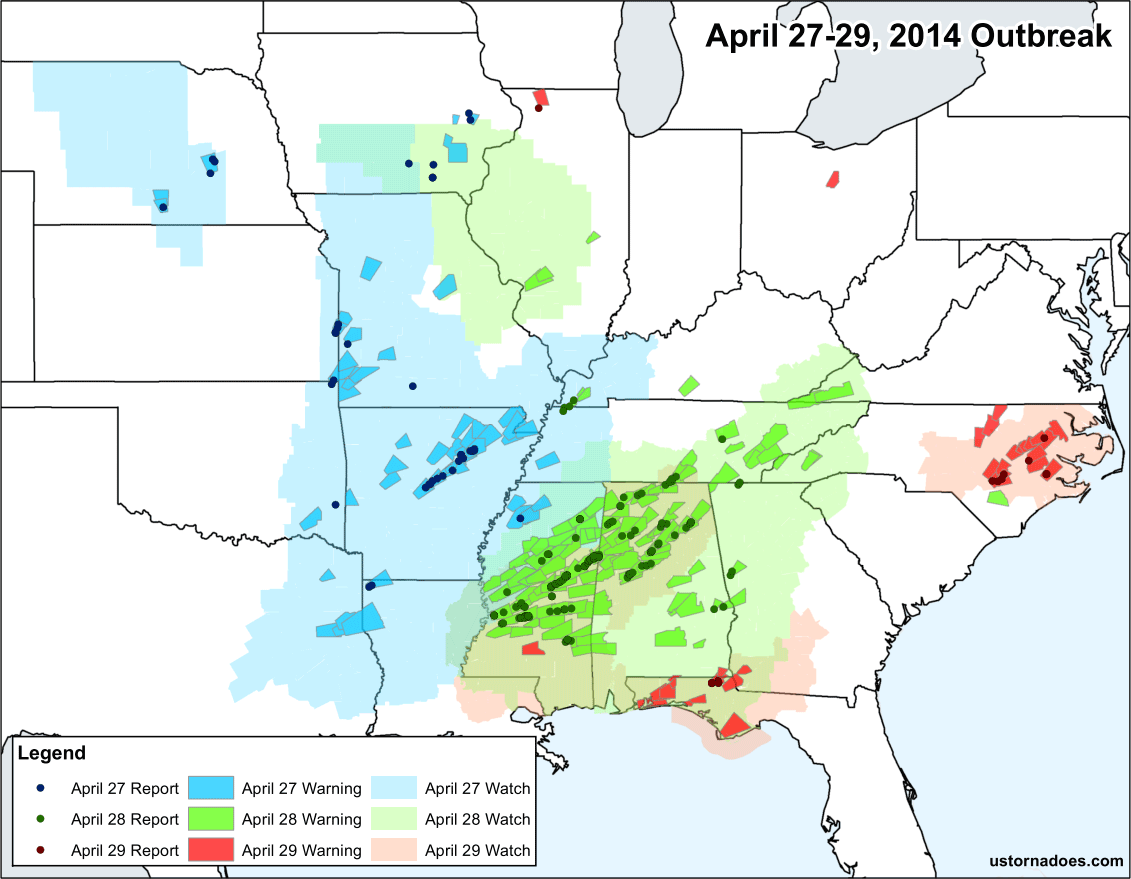
2013: May 27-31
246 warnings, 103 reports, 139 confirmed (map)
Reanalysis: 27, 28, 29, 30, 31
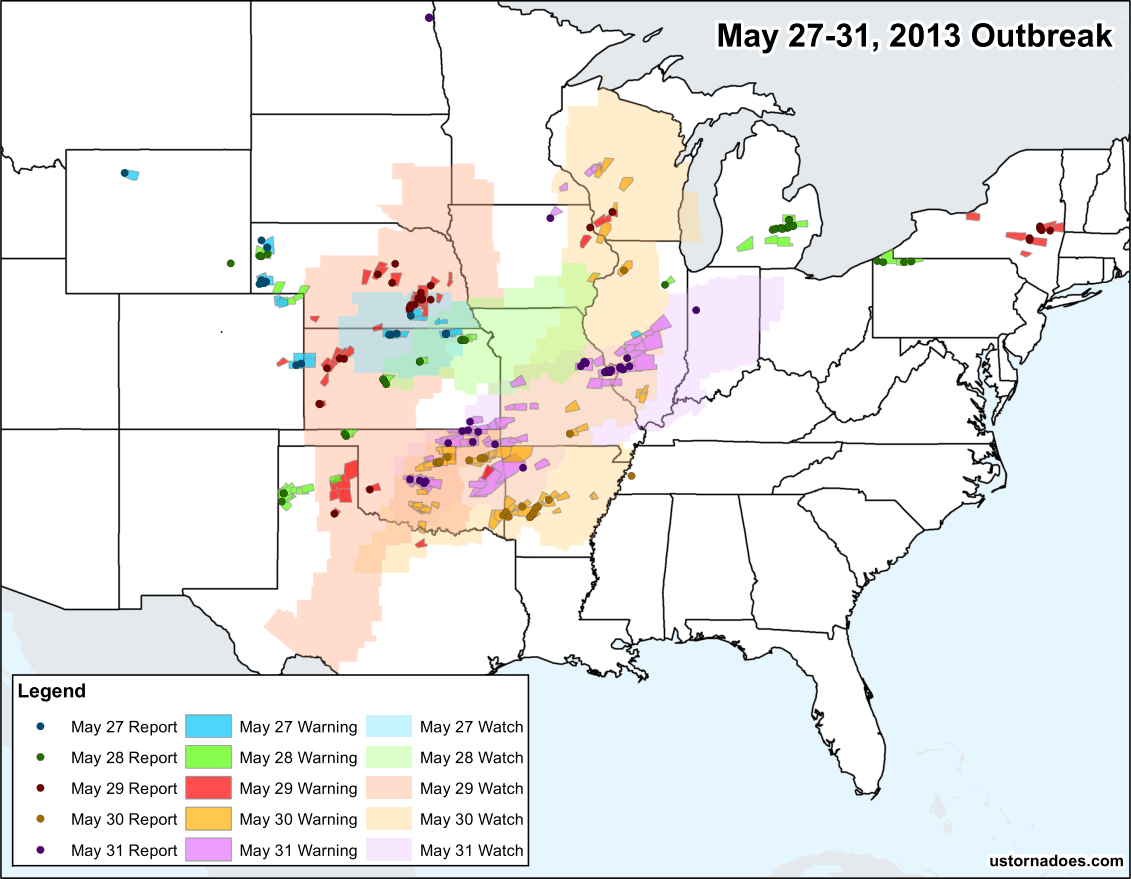
2012: April 13-15
153 warnings, 182 reports, 111 confirmed (map)
Reanalysis: 13, 14, 15
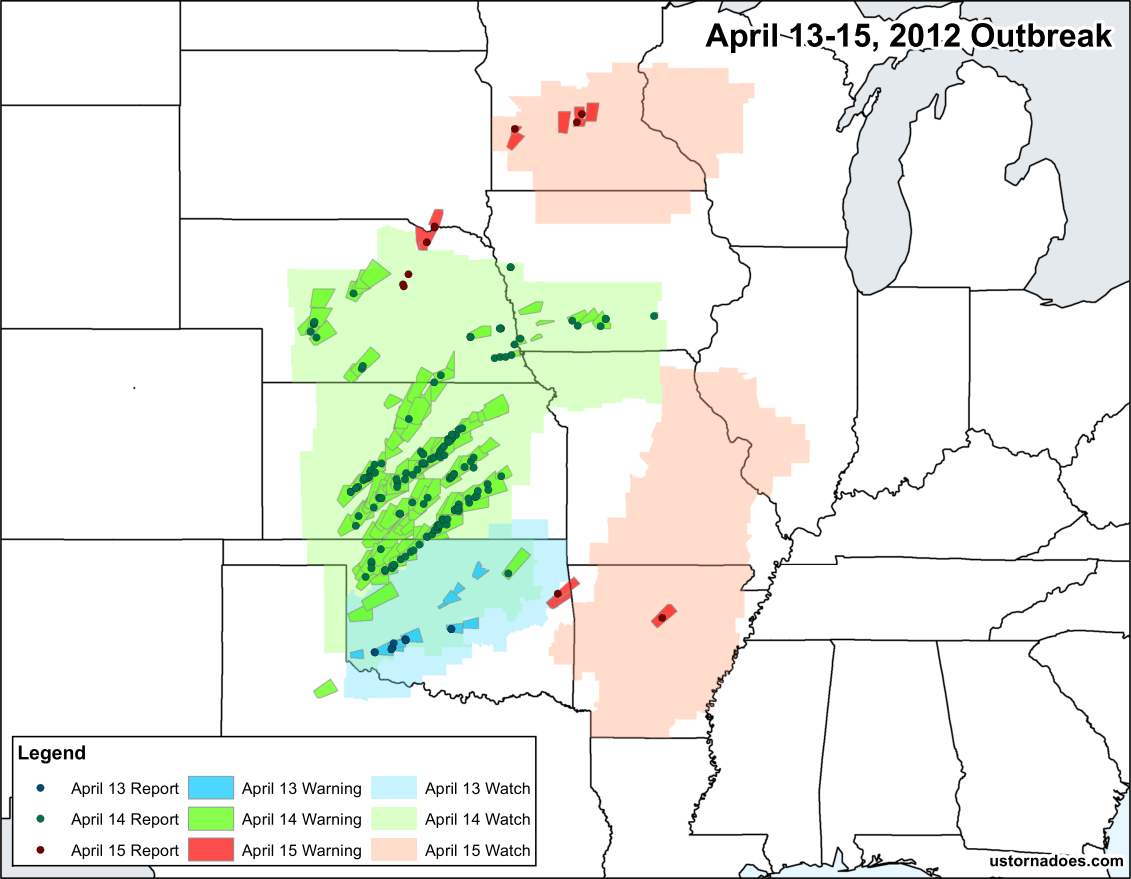
2011: April 25-28
921 warnings, 842 reports, 349 confirmed (map)
Reanalysis: 25, 26, 27, 28
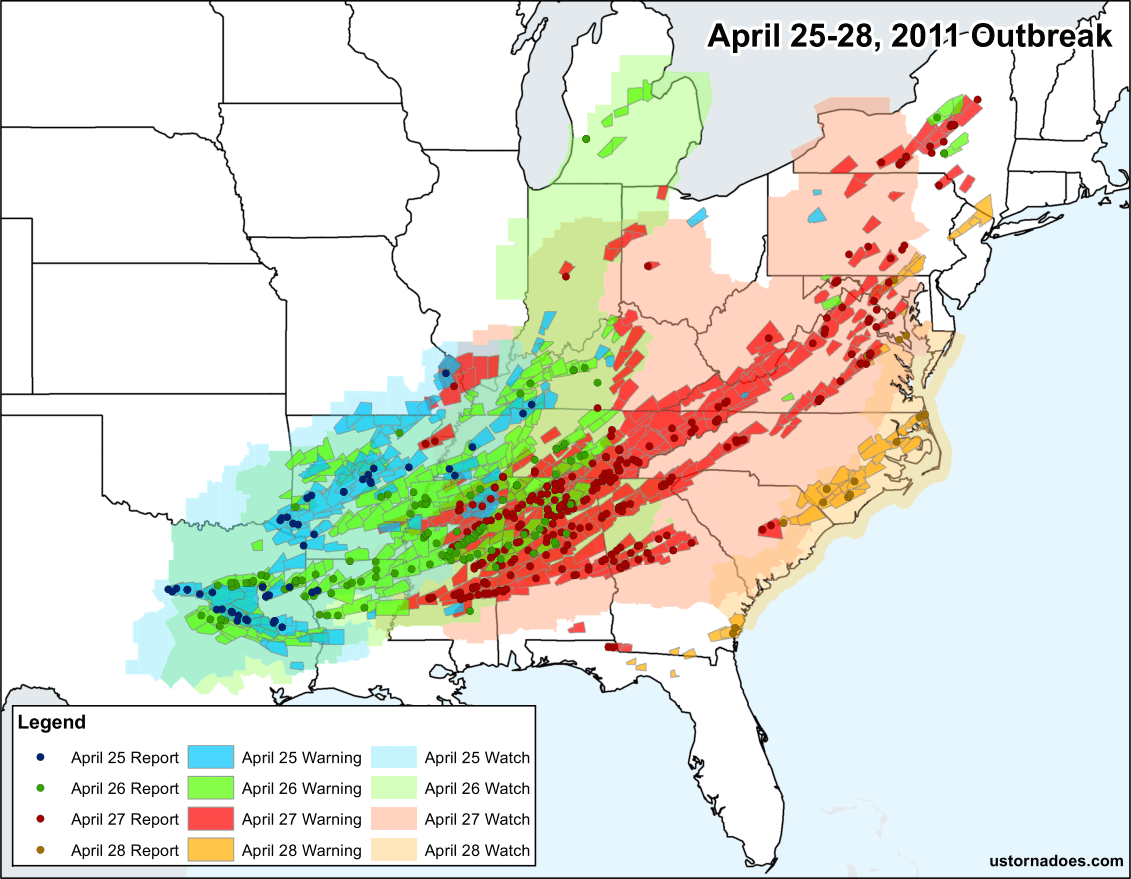
2010: May 22-25
170 warnings, 83 reports, 80 confirmed (map)
Reanalysis: 22, 23, 24, 25
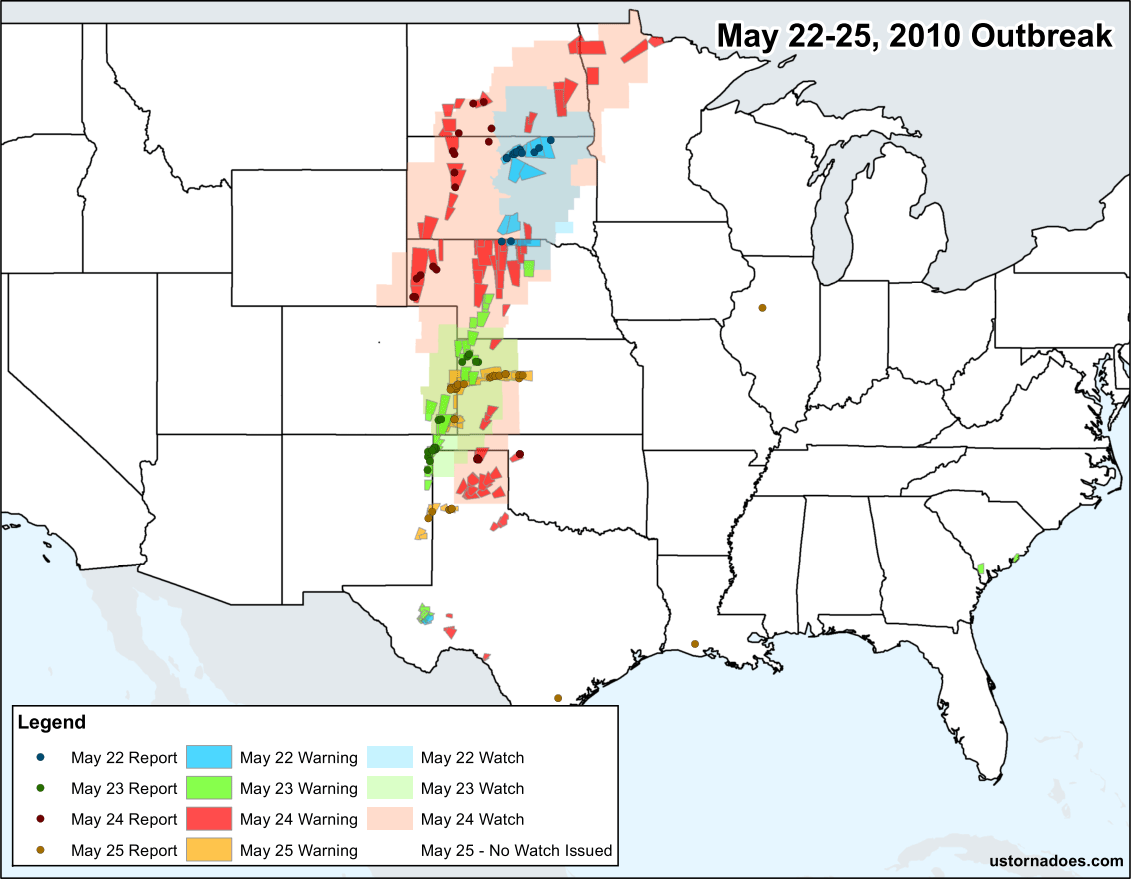
2009: June 15-17
226 warnings, 72 reports, 72 confirmed (map)
Reanalysis: 15, 16, 17
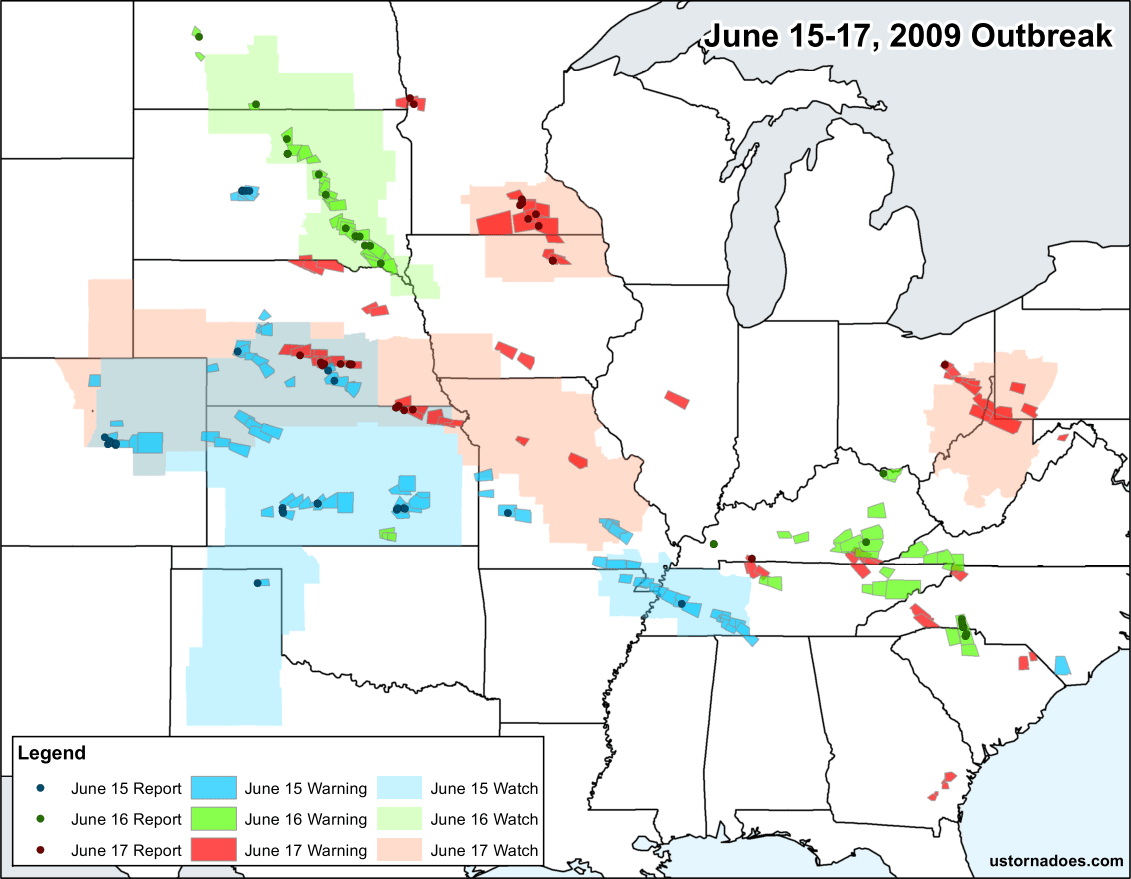
2008: May 22-25
263 warnings, 180 reports, 162 confirmed (map)
Reanalysis: 22, 23, 24, 25
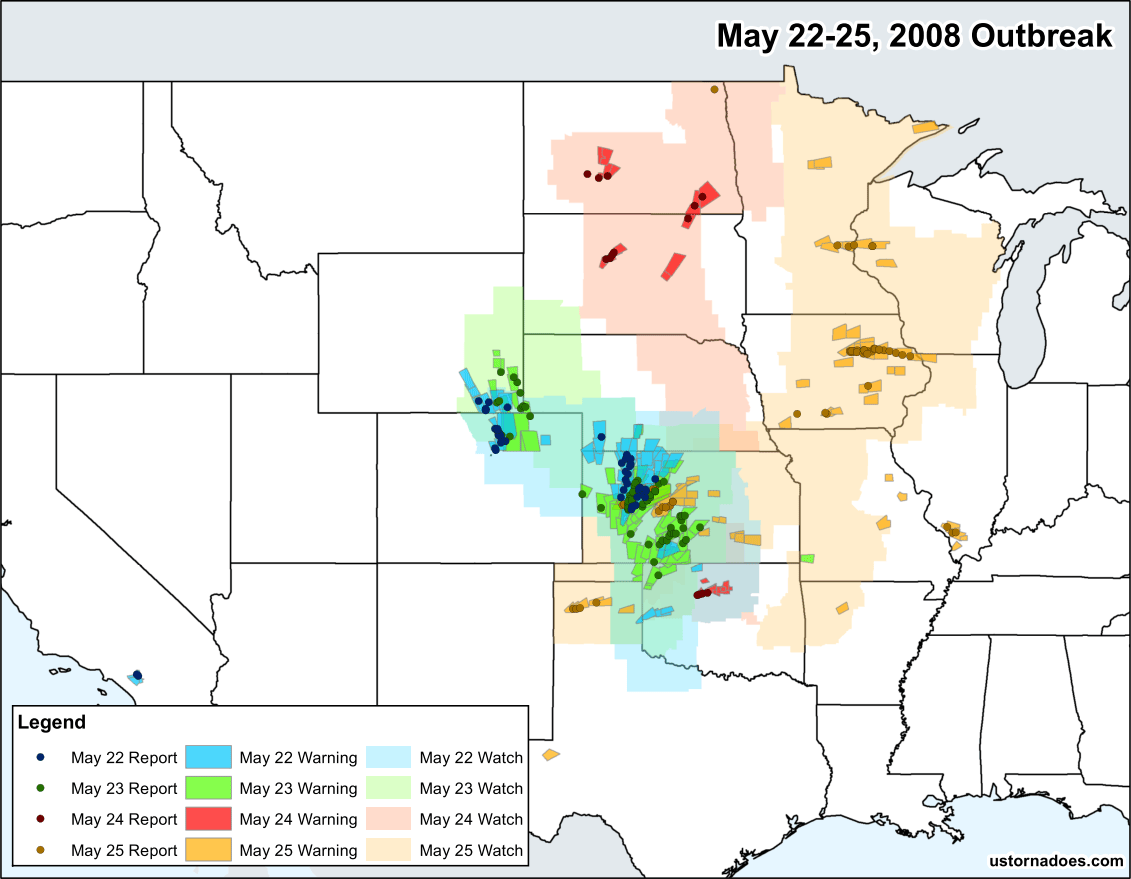
2007: May 4-6
217 warnings, 154 reports, 134 confirmed (map)
Reanalysis: 4, 5, 6
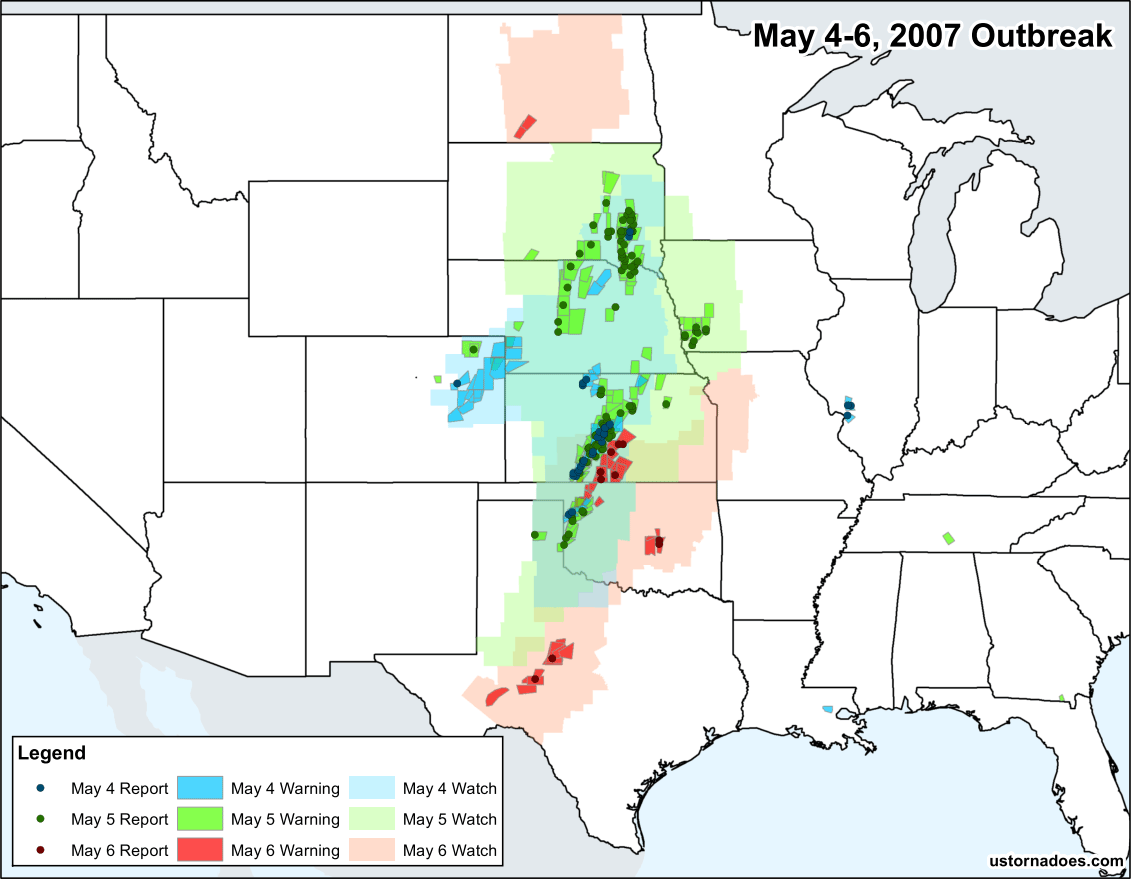
2006: Mar 11-13
276 warnings, 169 reports, 90 confirmed (map)
Reanalysis: 11, 12, 13
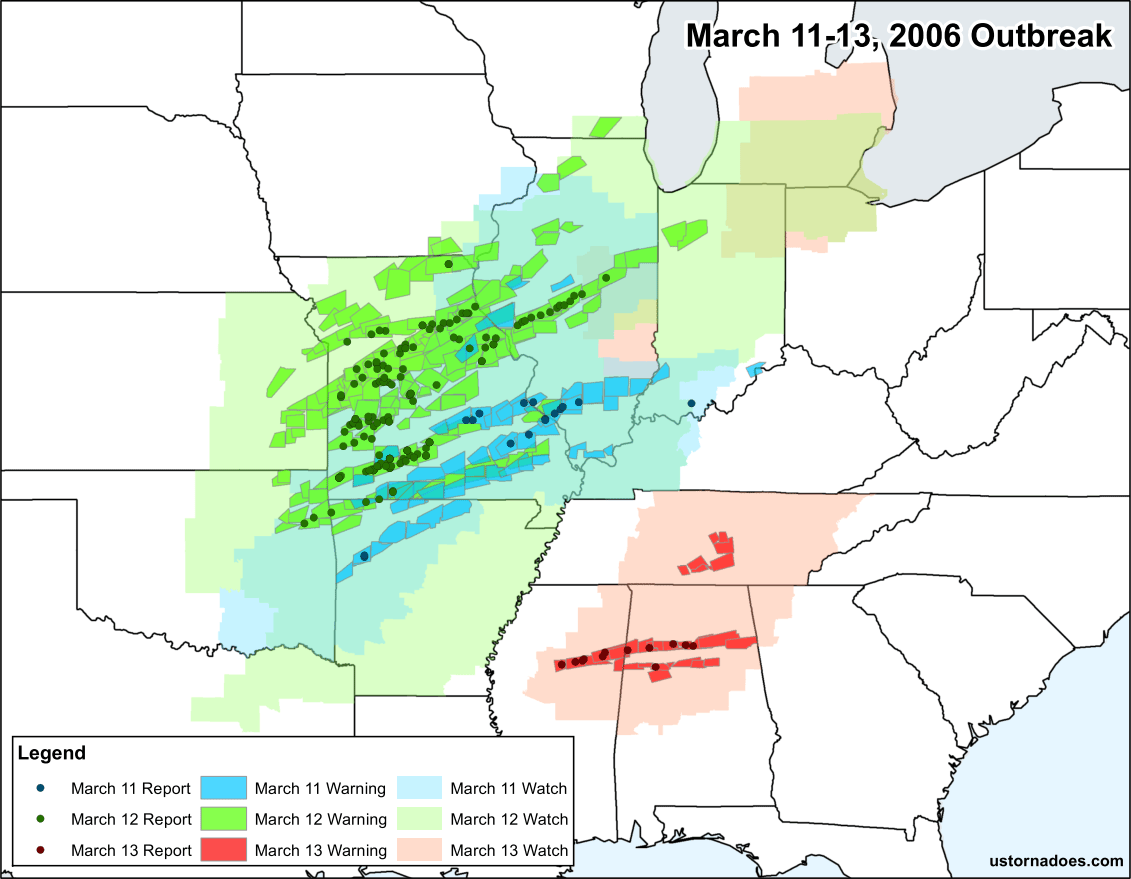
Brief notes and takeaways
In a few instances (like 2010), the outbreak or outbreak series shown in the maps above is not the largest number-wise for the year, but it is always the largest three day or greater significant day event. We used 10 tornadoes or greater as a minimum over the entire stretch. In 2011, we could have included days ahead of the Super Outbreak, but it is largely agreed upon as one event beginning and ending as shown.
At least in recent history, a three-day stretch approaching or surpassing 100 tornadoes is fairly trpical, at least once a year. The zone of impact is varied, with focus on the traditional Tornado Alley as well as the increasingly well known Dixie Alley. Areas in between those zones have also been visited by these prolonged tornado volleys, and they occasionally spill over further east.
U.S. Tornadoes
Latest posts by U.S. Tornadoes (see all)
- March 21-23, 2022 tornado outbreak - March 21, 2022
- Tornado events of 2020 - February 17, 2020
- The tornado outbreak sequence of May 2019 - May 30, 2019
